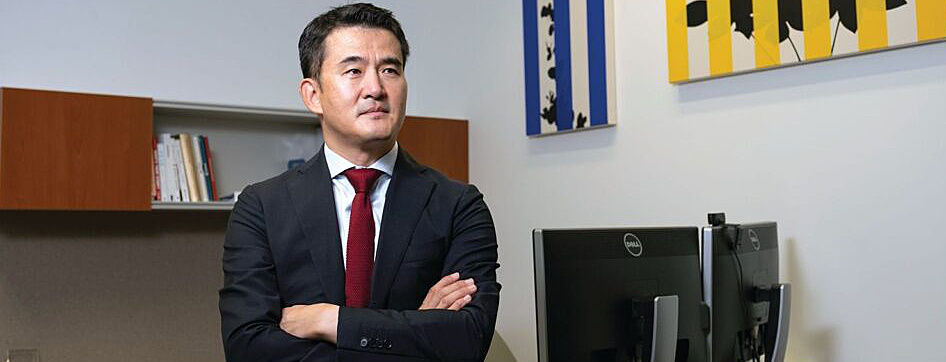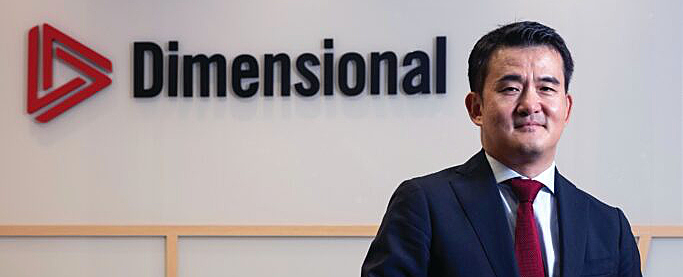With Joel Kim, Head of International Fixed Income and CEO Asia ex-Japan, Dimensional Fund Advisors.
Briefly describe Dimensional Fund Advisors, including its fixed income trading team, operations and capabilities?
Dimensional is a global systematic investment manager, founded by David Booth in 1981, and with US$653 billion in AUM as of September 30, 2021, including about $120 billion in fixed income. Dimensional has a long history of applying academic research to practical investing. We’re associated with some of the most respected names in financial academia, including Nobel laureates Eugene Fama and Robert Merton, as well as Fama’s long-time research partner Ken French.
We have 13 offices globally, including Asia Pacific trading centres in Singapore and Sydney. Since launching our first fixed income strategy in 1983, we have expanded our offering to help clients tailor fixed income solutions based on academic insights.
In terms of personnel, we trade fixed income securities using a team approach overseen by our Investment and Best Execution committees. The fixed income desk has trading capabilities around the globe, allowing us to interact directly in each market we trade.
What’s your own professional background and career path?

I started my fixed income career in 1998 in Europe, where I managed global developed fixed income strategies at what was then ING Investment Management. I moved to Hong Kong in 2002, where I held various FI portfolio management positions, lastly as Head of Asian Debt. In 2011, I joined BlackRock in Singapore, where I was responsible for fixed income portfolio management in Asia, including Japan and Australia. I joined Dimensional initially in its Singapore office in 2016 before transferring to London, where I headed the EMEA fixed income desk. I’m currently based back in Singapore where I combine my role as CEO for the Asia ex-Japan region with overseeing Dimensional’s non-US fixed income business.
What are the main challenges in accessing liquidity in corporate bonds?
The need to maintain profits while continually meeting regulatory requirements through shrinking balance sheets has meant dealers are acting more as agents than as principals. ‘Dealer velocity’, a metric which shows the rate of turnover of dealer balance sheets, has increased dramatically in the last 15 years. Divergences in regulations and the availability of data have driven differences in transparency and liquidity across global credit markets. Against that backdrop, more diversity in the number of venues and protocols offer added ways to source liquidity, but also adds to complexity and the need to invest in data and technology. The ability to aggregate and manage data has become critically important.
How does Dimensional partner with sell-side banks for liquidity provisioning, and how has this evolved?
While we work with an increasing number of venues and alternative liquidity providers, sell-side banks remain an important source of liquidity. Banks help with bridging the gap between the time at which a seller wants to sell and the time it takes to find a buyer, as the fragmentation in credit markets still means we may not be able to match up perfectly. Banks add value, particularly for more high-touch transactions, block sizes and primary issuance.
How does Dimensional partner with electronic trading platforms for liquidity provisioning, and how has this evolved?
Technology, regulation and changes in market structure have driven electronification of fixed income markets and a more diverse use of protocols and venues to access liquidity. Trading via electronic platforms represents roughly 90% of our total trading volume, from around 10% a decade and a half ago. While most of our trading is still RFQ, electronification has allowed our processes to become more data-informed and rules-based. It has also allowed us to become liquidity providers rather than just liquidity seekers. With increased segmentation of bond trades, we’re transitioning towards low-touch, fully automated trading for the more liquid segments of the markets.
What recent developments in trading protocols have helped with liquidity sourcing?

With little done through voice at this stage, we utilize several alternative protocols, including electronic-disclosed and anonymous RFQ, dark pools and central limit order books. Peer-to-peer networks that allow trading directly with other buyside participants have been the biggest source of liquidity since we adopted them in 2015.
As we are a systematic manager, our portfolios tend to be highly diversified. Our investment process aims to harvest factor premiums and emphasizes having the right broad portfolio characteristics. This leads to more flexibility in the trading process as traders can work with substitutable securities. It’s a contrast with traditional active bond picking where trading becomes very issuer- and issue-specific. Our ability to post a large pool of substitutable securities to various buy-side networks, coupled with the benefit of being patient in our execution, allows us to act more often as liquidity providers rather than as liquidity seekers. To give you an example, we post each day about 4,000 securities across multiple venues, of which about two-thirds are buy candidates and one-third are sell candidates.
What is the importance of data, and how would you describe the current state of data utilization on buy-side trading desks? What are the ‘pain points’?
As a systematic asset manager, Dimensional extensively leverages data across all investments. We have a dedicated internal data team within research that is focused on managing and cleaning data. This team evaluates what data can be used and how, in addition to the data that is managed within the portfolio management and trading teams. For fixed income in particular, we are heavy users of market data across the full investment process — from alpha generation to risk management to trading. In the latter, we use data for price discovery, sourcing liquidity, and for TCA. What distinguishes us from most other money managers is that liquidity sourcing is not just the responsibility of the trading desk. It starts with portfolio managers, who apply systematic liquidity screening of the full investment universe every day to help determine what to focus on. We run algos, using both ticker tape data when available, as well as other post-trade data sources to identify liquidity systematically. Combining transaction-based data with quote-based information in this way helps us figure out positioning and available liquidity. We believe our approach to accumulating data is unique to our trading process.
In terms of pain points, there are significant differences in data availability and quality across regions, driven by variations in regulations and market structure. In this area, the US is ahead of Europe and APAC. However, we believe that over time there will be more convergence, with Asia ultimately catching up.
What is the future of liquidity sourcing in corporate bonds, i.e. what might be some key themes in one to three years’ time?

Technology, data, and regulation-driven transparency will accelerate enhancements in liquidity sourcing and further drive the move towards low-touch, rules-based trading processes. More segmentation also implies structuring trading desks appropriately, hiring the right people, and ensuring adequate skill diversity within teams. For instance, a prerequisite for candidates seeking to join our trading team is an ability to code. The winners will be managers who can leverage these developments effectively. Naturally, we think systematic managers like ourselves are well-positioned in this environment.
Accessing Liquidity in Corporate Bonds first appeared in the Q4 2021 issue of GlobalTrading, a Markets Media Group publication.
©Markets Media Europe, 2021
<a href=”#top”></a>
©Markets Media Europe 2025













